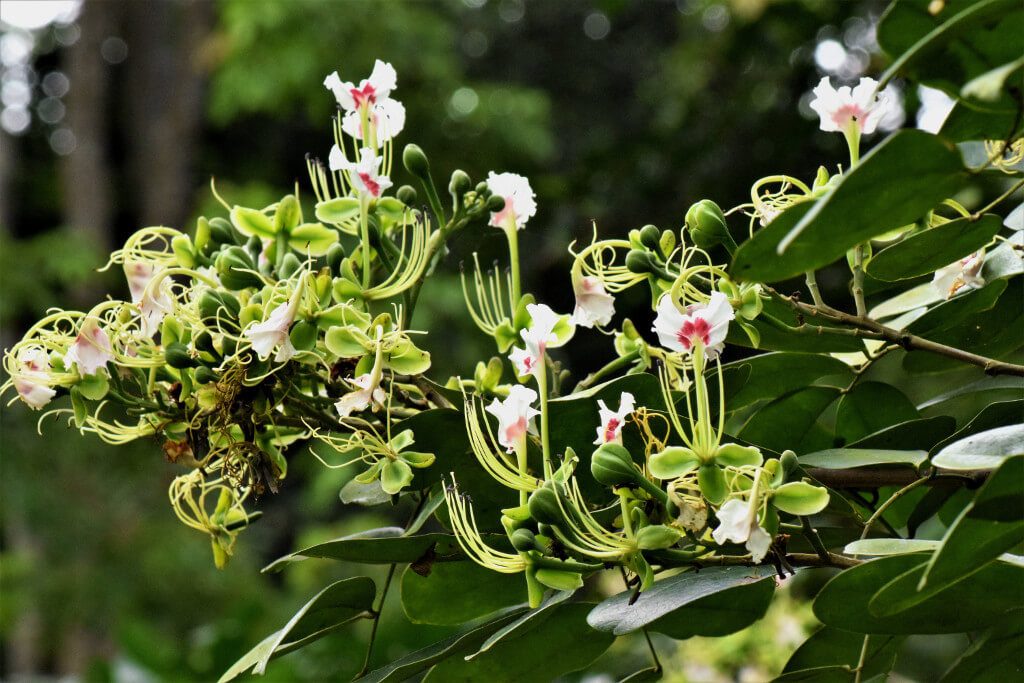
24 Jul Afzelia africana
Scientific name: Afzelia africana Pers.
Family: Leguminosae.
Distribution/conservation status: widely distributed in the transition zone (semi-dry forest). Vulnerable (VU) declining due to over-exploitation for timber, fodder, and other uses.
Common names: African mahogany (English), Aparata (Igbo), Apa (Yoruba), Akpari, Akpasi (Edo).
Fruits/seeds: dark brown, oblong, flattened pod with two hard woody valves containing approx. 8 black ellipsoid seeds with an orange aril.
Fruiting time: April – July, December – January.
Seed collection: pod opens explosively when ripe to expose seeds which remain attached and dangle to attract birds. After a time the pods fall, often with a few seeds still attached. For optimum seed collection, harvest pods when they change colour from green to brown, keep dry and collect seeds as the pods open. Do not remove arils as seeds with arils have a higher germination rate.
Type of seed: orthodox.
Sowing method: large seeds (> 2 g) produce more vigorous seedlings. Select large seeds and sow on end (hilum facing downwards) 2 cm deep. Stored seeds must be soaked in water 1-2 days. Sow in pots, not trays, as germinated seed rapidly develops tap root which is sensitive to disturbance.
Sowing medium: forest soil.
Germination period: 7 days.
Germination percentage: 90 – 95%.
Growth/development: transplant within 1-2 months to minimise damage to tap root. Young trees grow quickly and may be fertile when 3 to 4 years old.
Notes: seedlings are often found under parent trees but long-term regeneration is poor due to browsing, susceptibility to fire, drought, and grasshoppers.

Afzelia africana Pers

